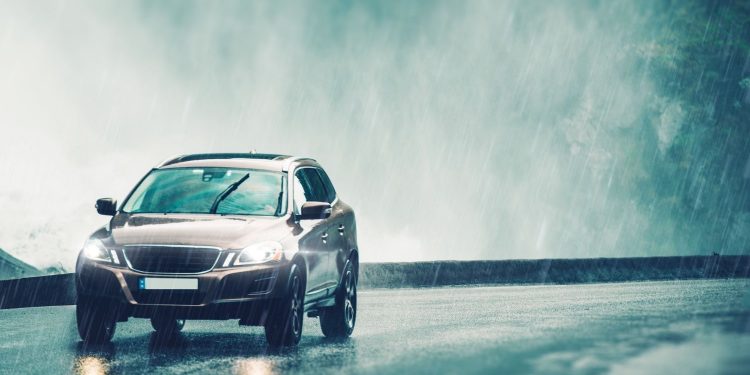Snow, rain, sleet, and fog—they all make driving more dangerous. Here are a few tips for safe driving in bad weather you may have forgotten.
Driving is already filled with dangers, and it only gets worse when the weather turns bad. Inclement weather demands better defensive driving techniques and greater alertness, but if you suddenly find yourself in a skid on an icy road or lost in a deep fog, will you know what to do? For those who haven’t had a driver’s education class in a while, here are several tips for safe driving in bad weather you can commit to memory and draw on when things get wet, icy, or otherwise scary on the road.
Rain
Driving through light rain may be pleasant, but even a light skimming of water on the asphalt can cause accidents. Up top, of course, rain can coat your windshield and make it harder to see, even with wipers, so keep your blades up to date and store of washer fluid topped off. Down below, the rain will mess with your wheels’ traction. Even a slight rain can intermingle with road grime and turn that rough asphalt into a slick surface.
Excessive wetness creates a layer of water between your wheels and the road, removing all traction through hydroplaning. In some instances, rain can even bring oil trapped in the roads to the surface, forming slick patches. Slow down when the rain falls, stay alert, and go easy on the brakes—which is good advice for the following conditions as well.
Snow and Ice
On a cold and snowy day, take all the slippery features of a rainy day and multiply them. Even a freshly plowed and salted road can present a slippery surface or black ice, causing your wheels to lose their grip and you to lose control of the car. If you don’t have all-season tires, consider picking up a set of winter tires that can provide more traction.
Snow reduces visibility, so clear your headlights and keep the low-beams on while driving through a storm. Updating your wiper blades is vital, as is getting your brakes checked and keeping your oil and other fluids topped off. Winter can take your car up to and past its limits, so ensure it’s ready with a pre-seasonal checkup.
Fog
When thinking about tips for safe driving in bad weather, don’t forget defensive driving in deep fog. When driving through fog, keep your headlights on, but use the low-beams or fog lights, otherwise you’re just illuminating the fog in front of you, obscuring your vision. Slow down and keep your eyes on what you can see of the road and your surroundings. Keep some space between you and other cars, and if you can’t see any, just assume they’re there and slow down anyway. Stay to the right and, in fact, consider staying off the road until things clear up.



